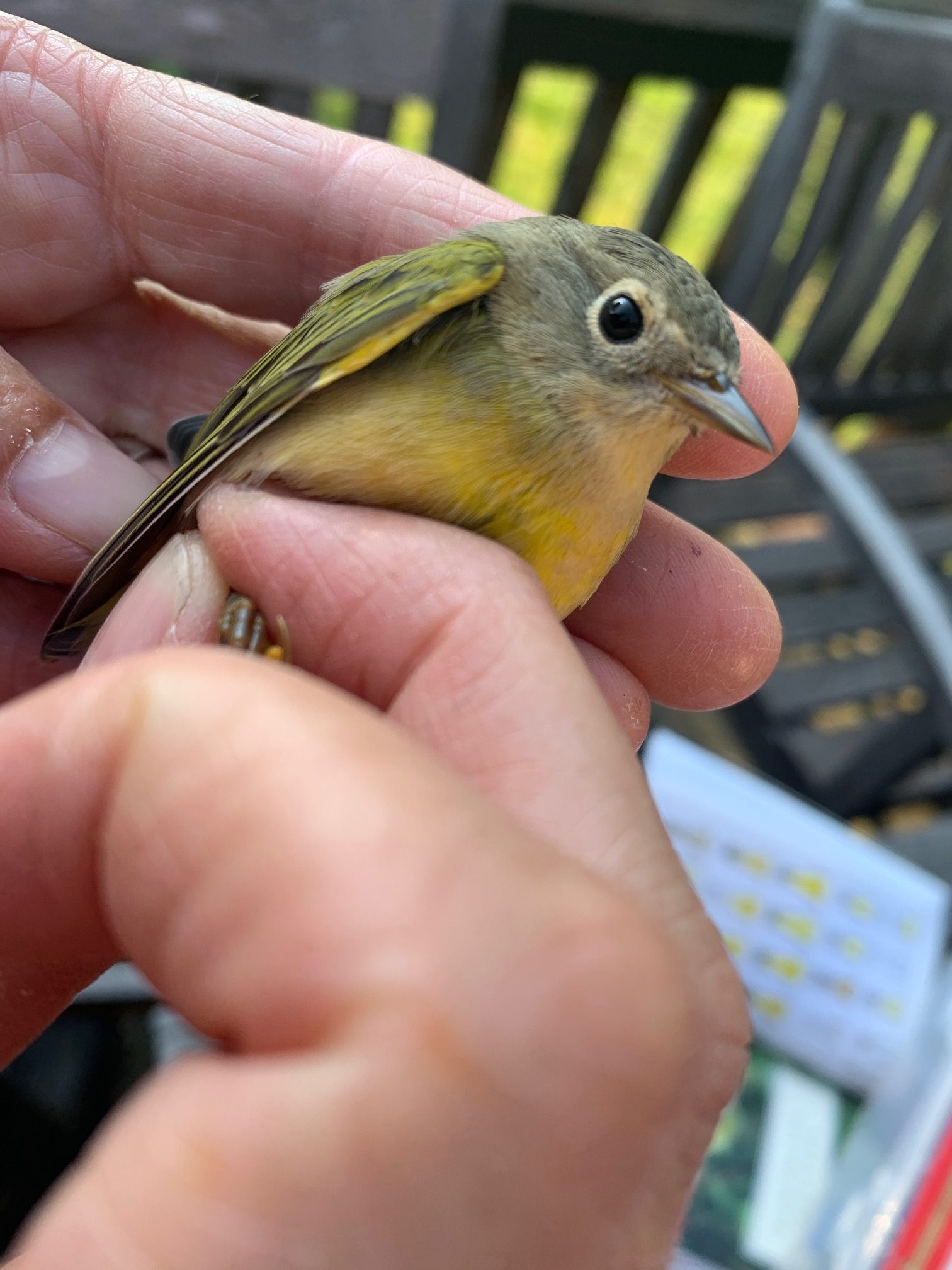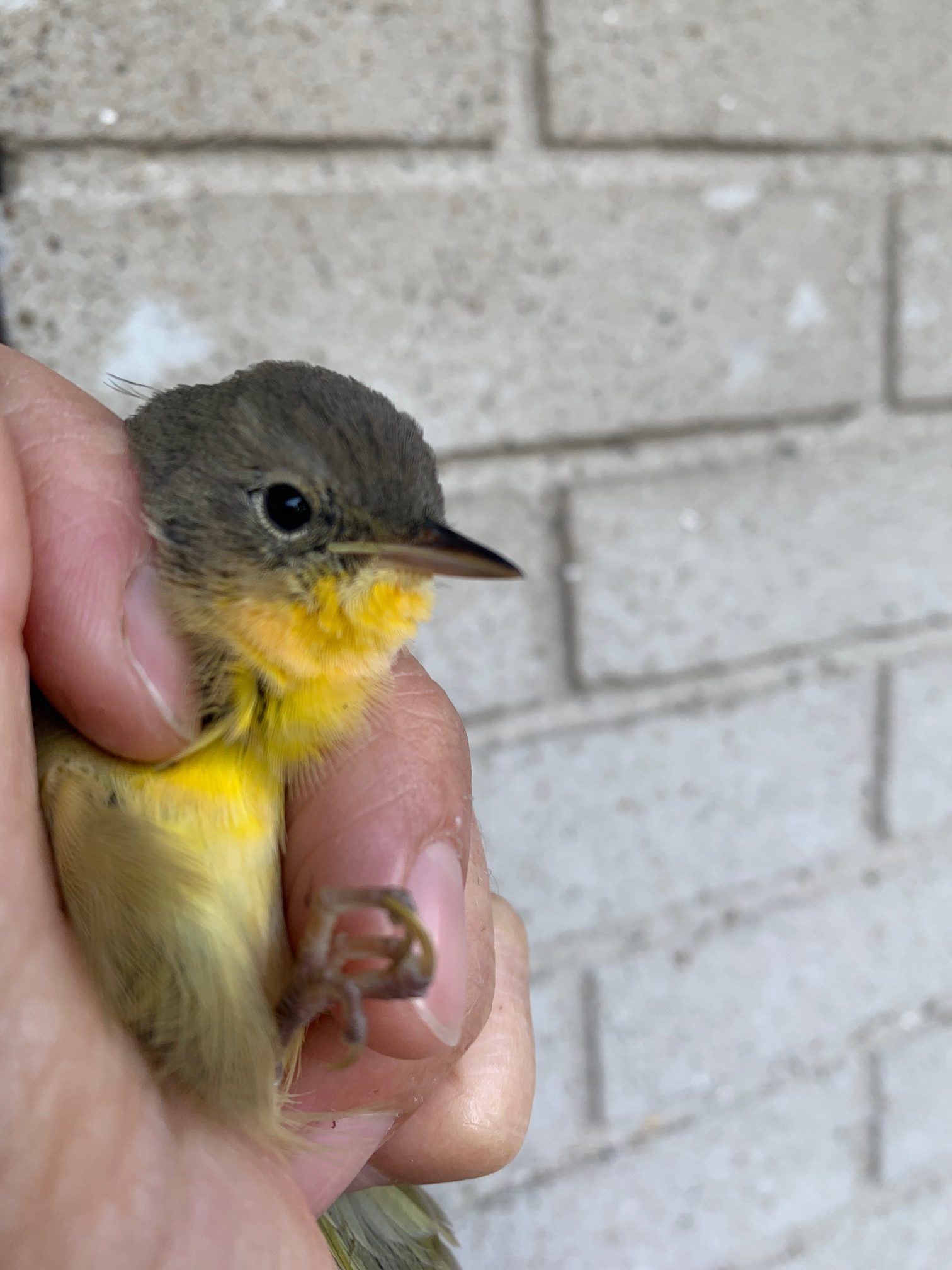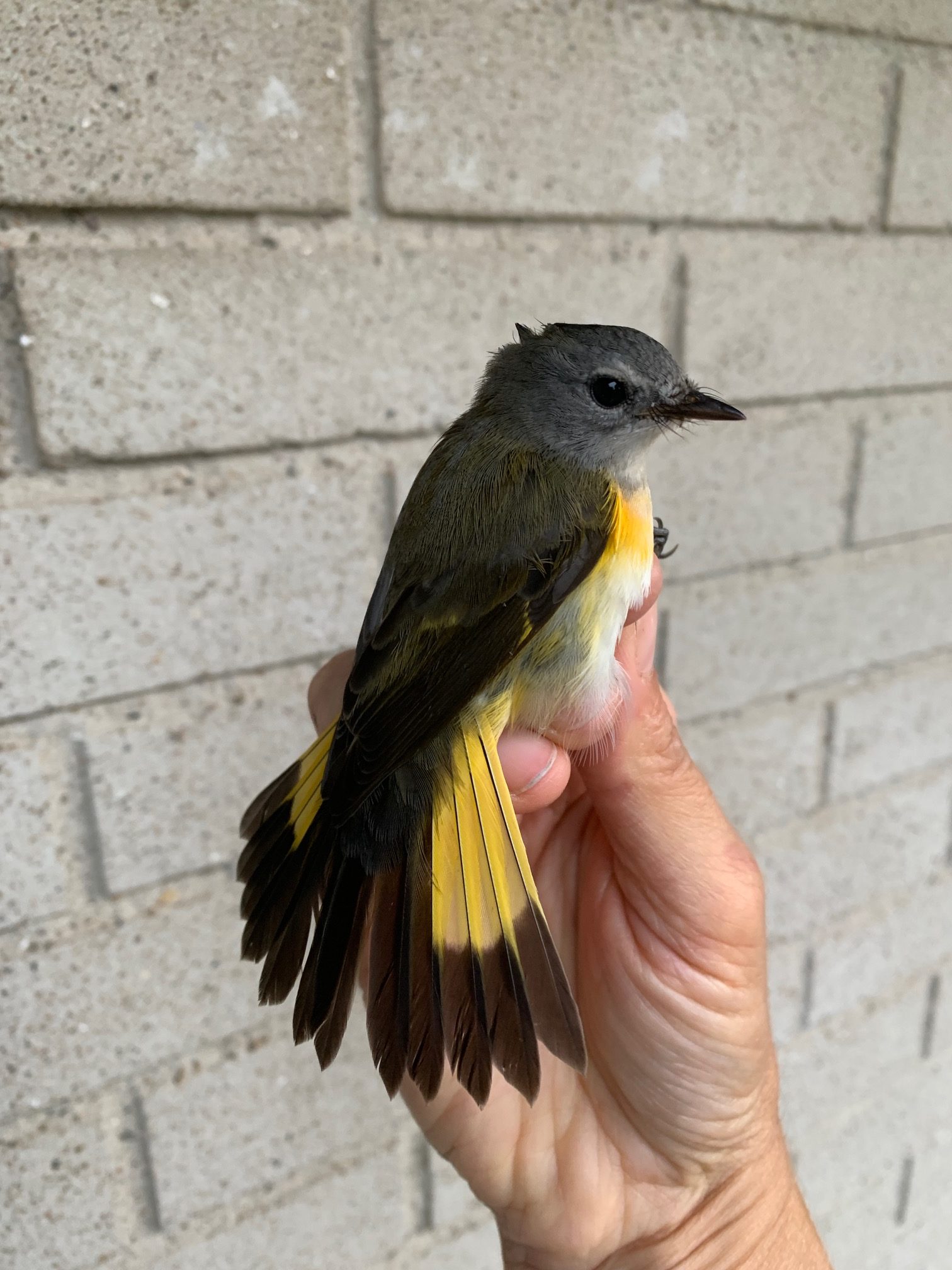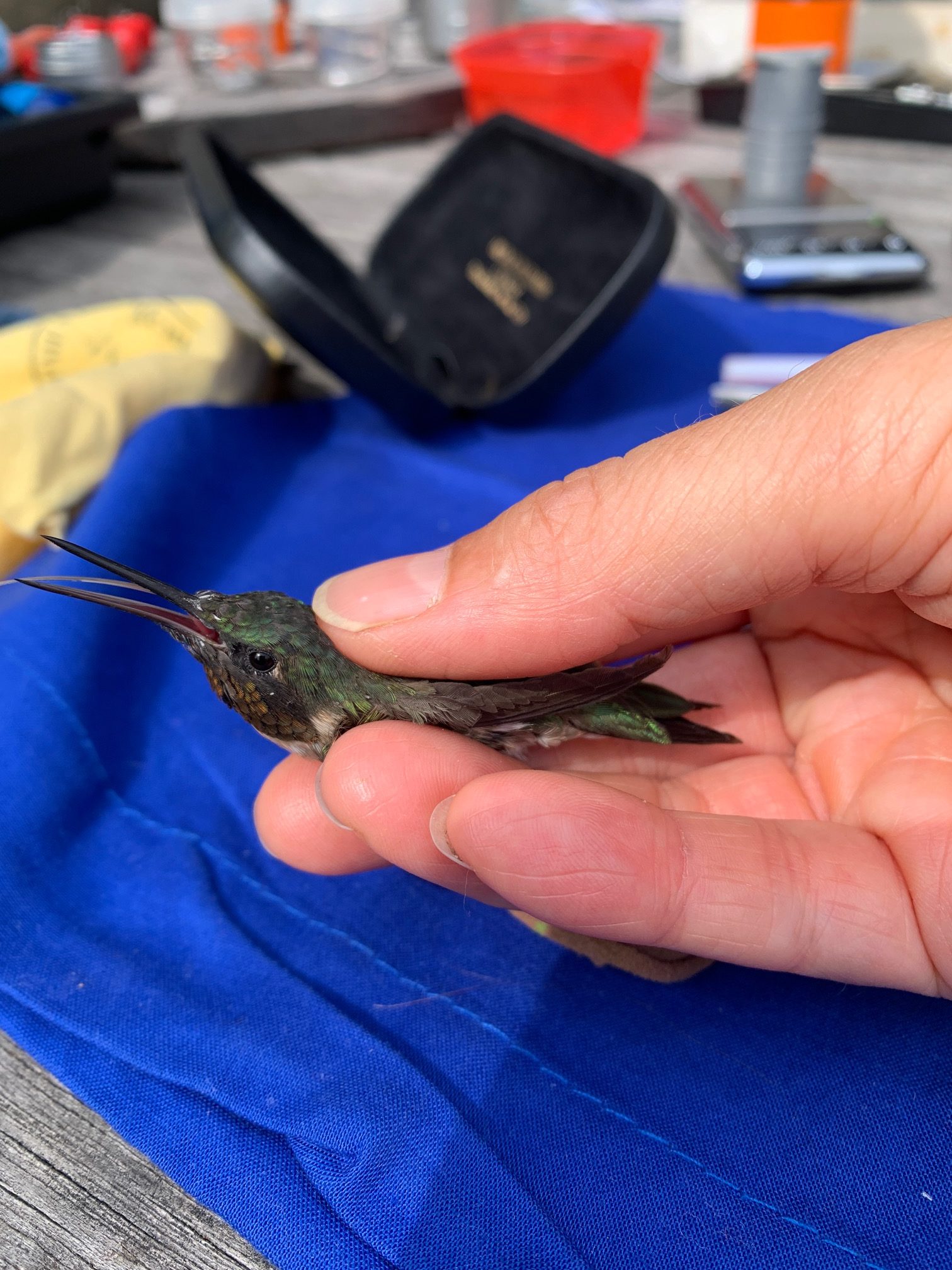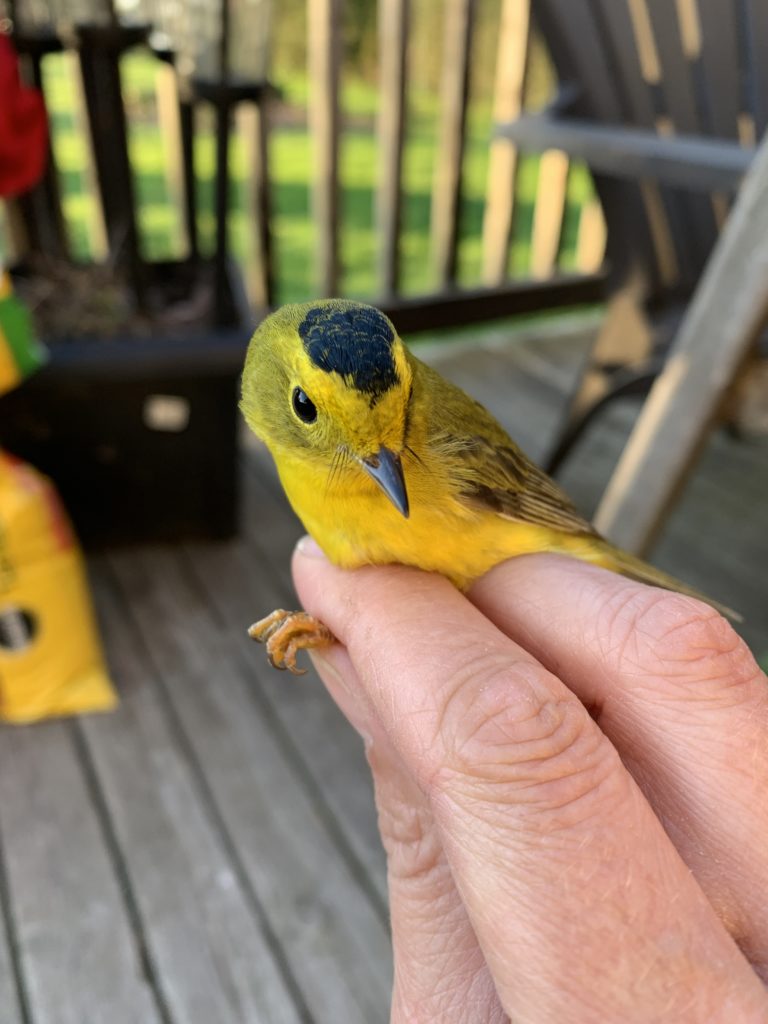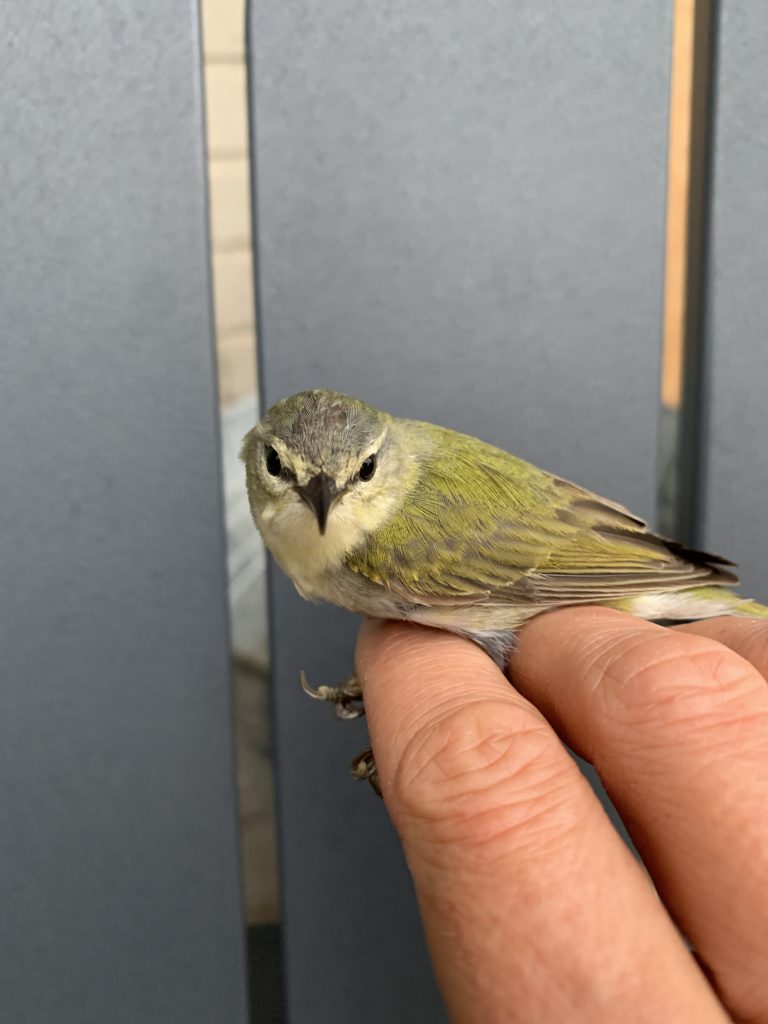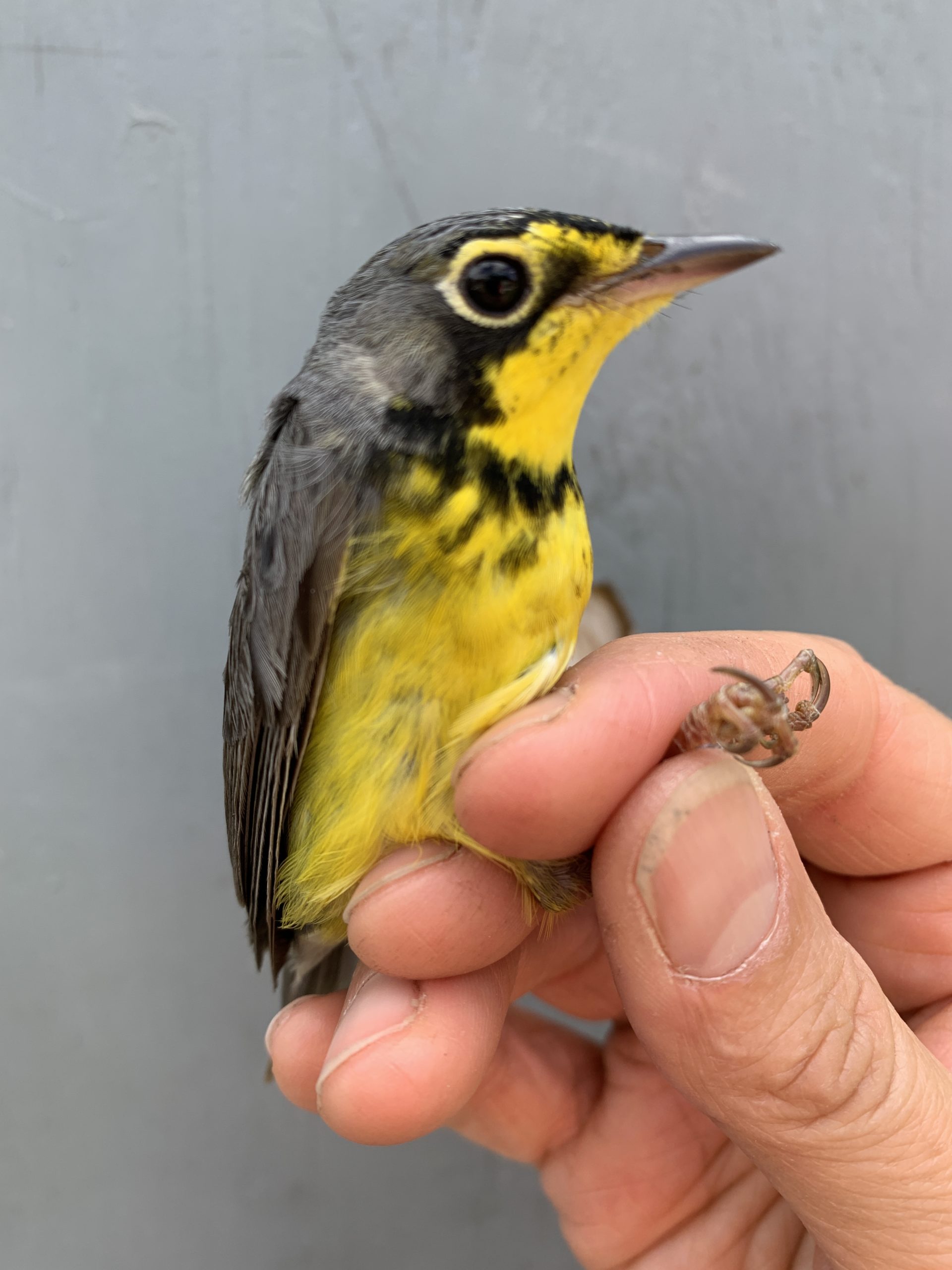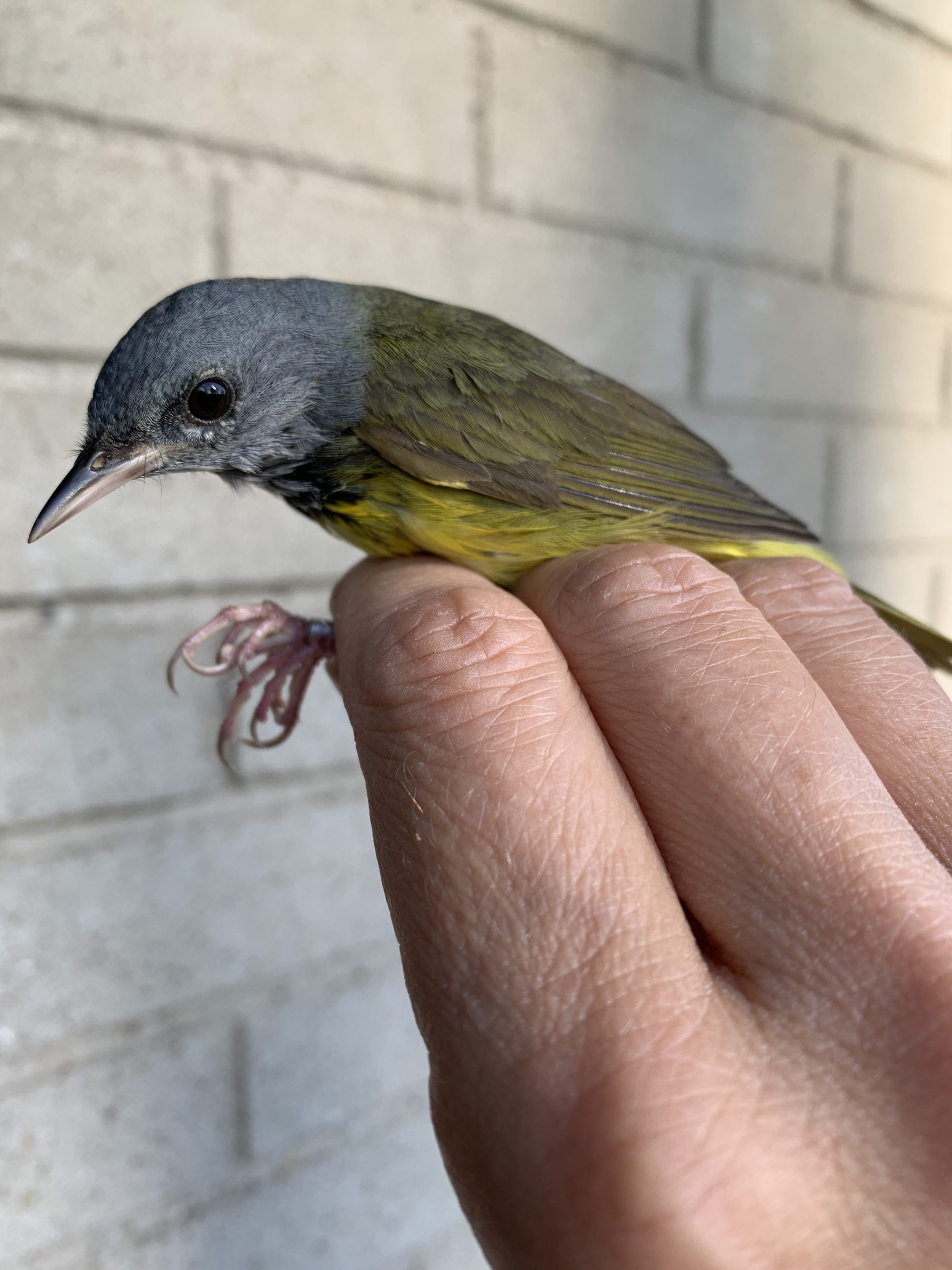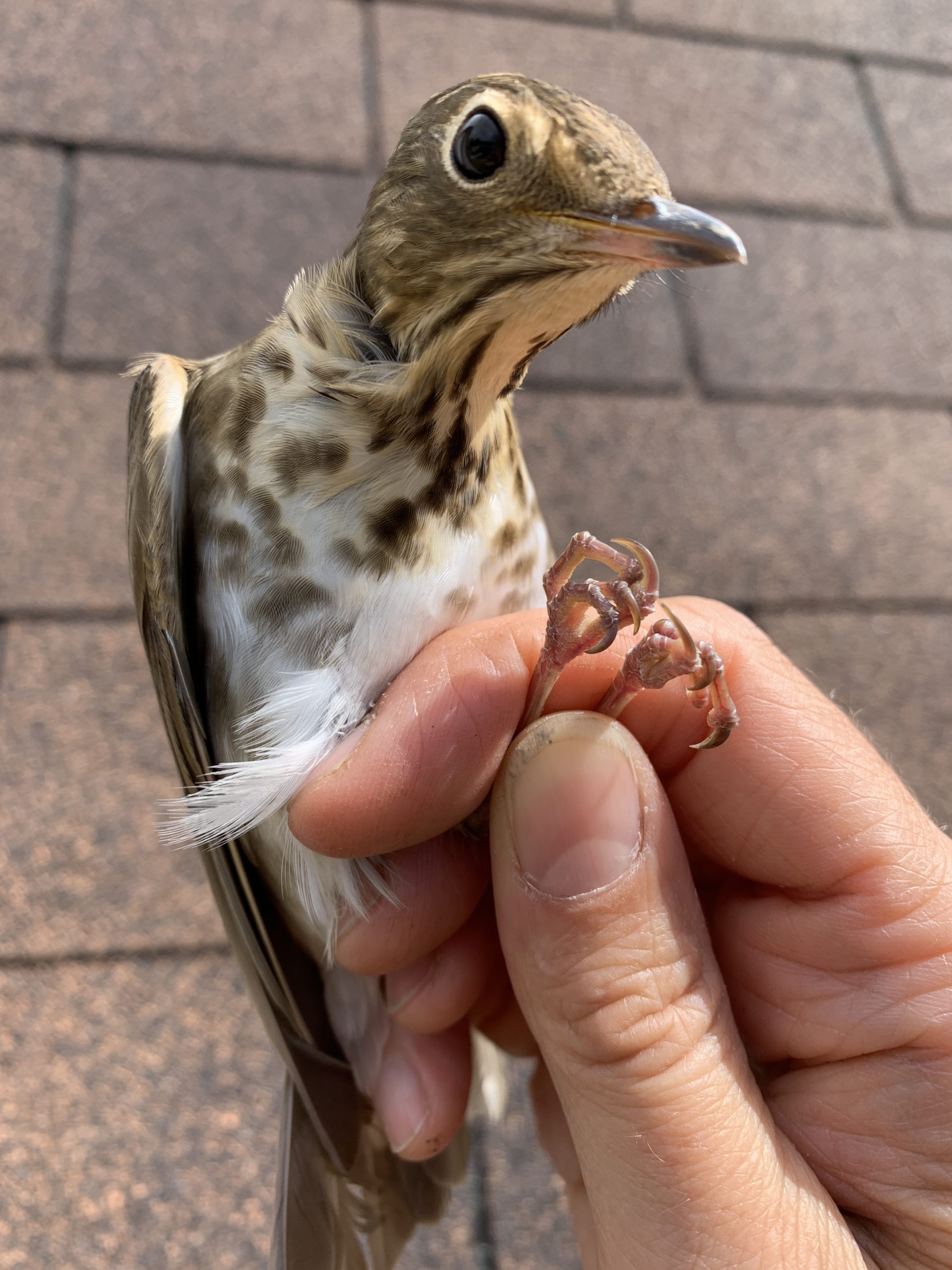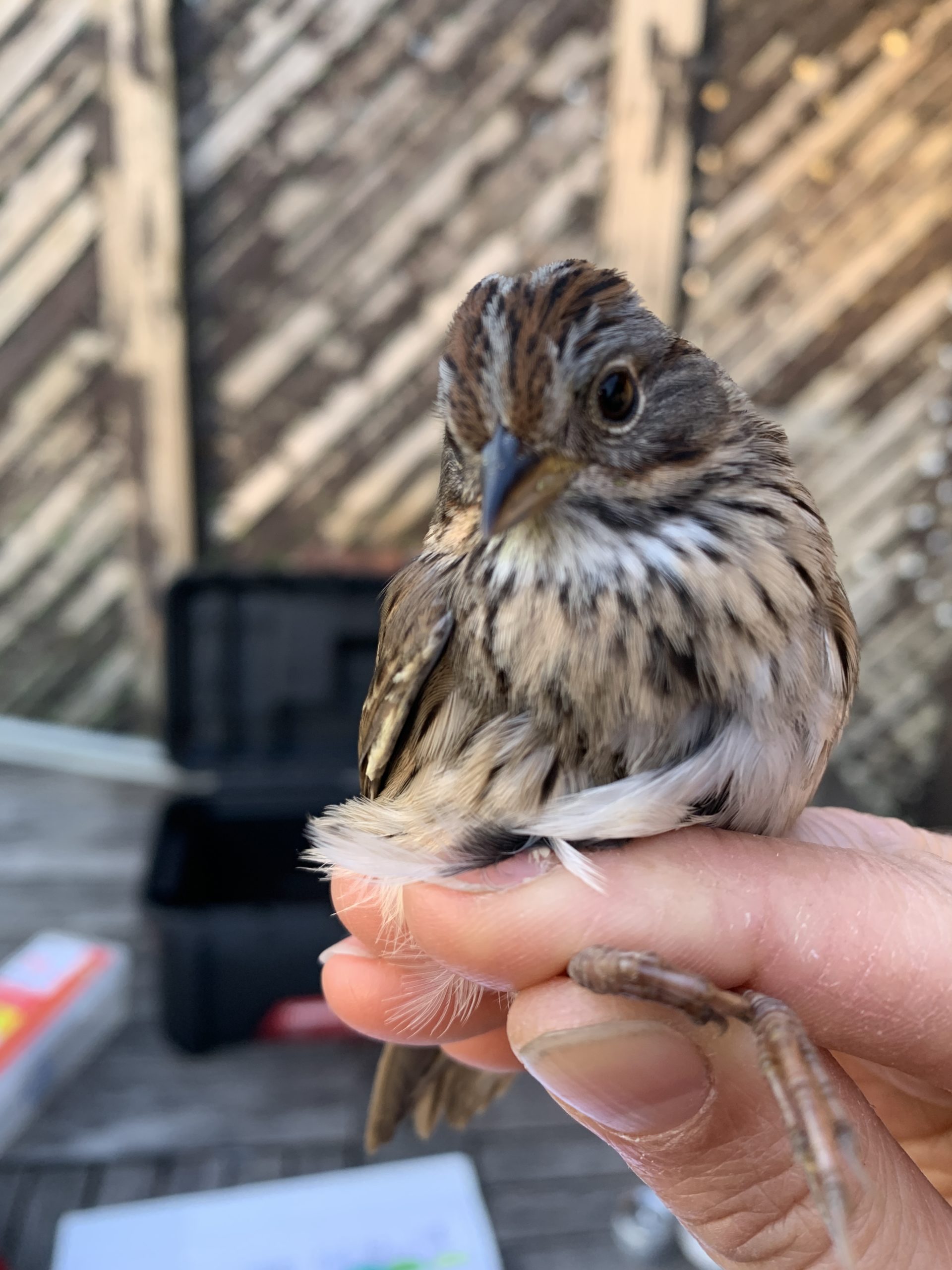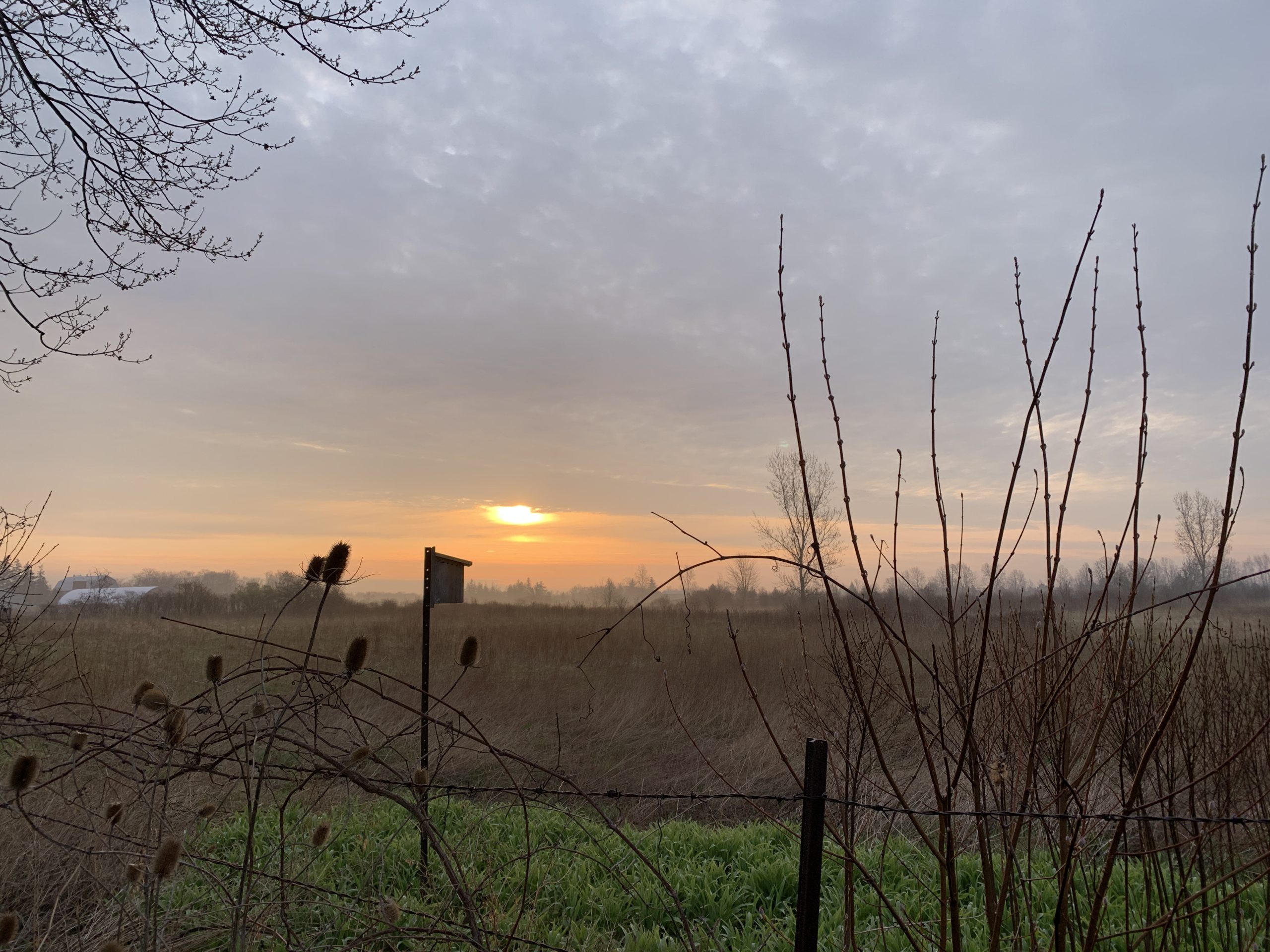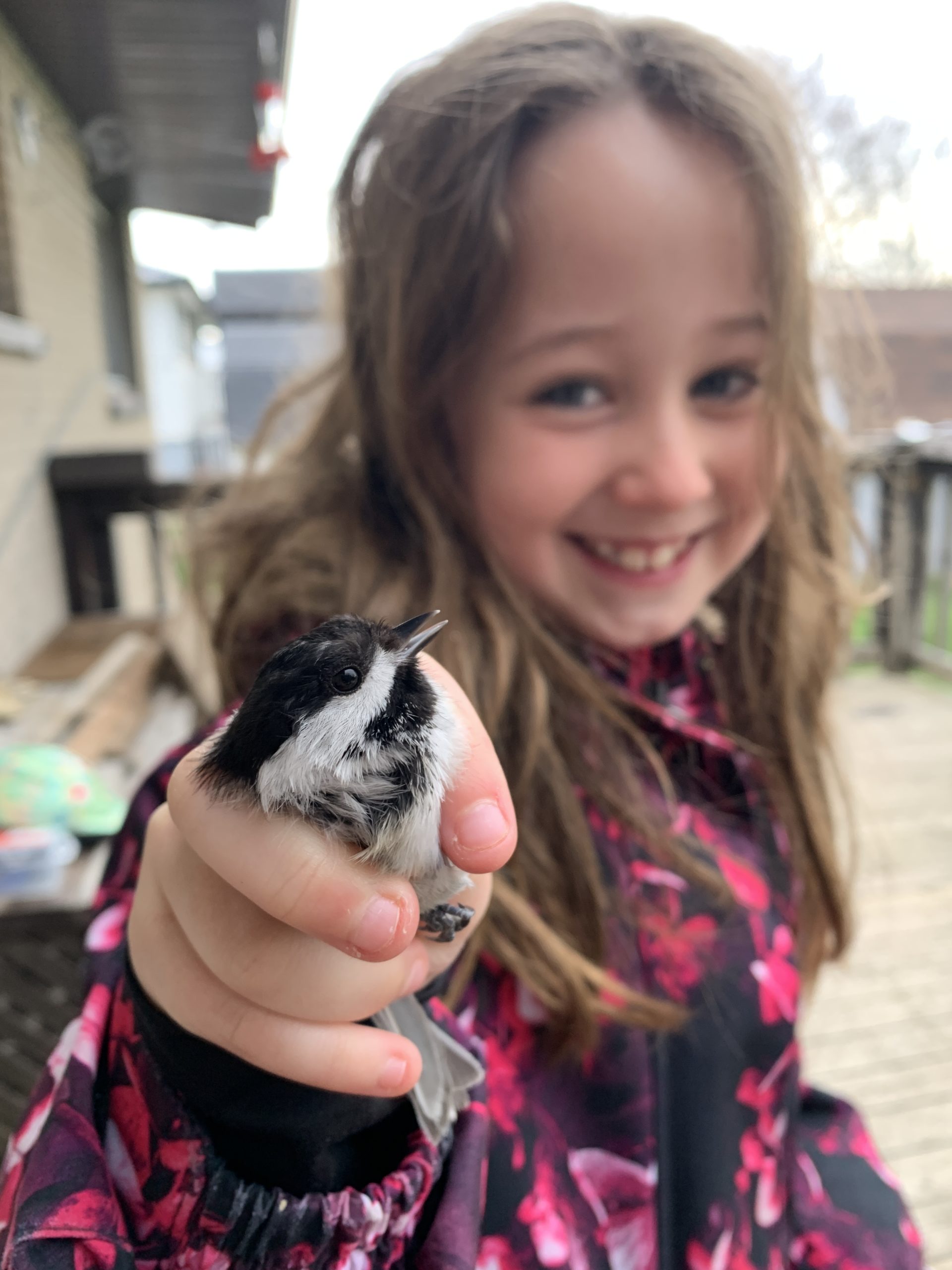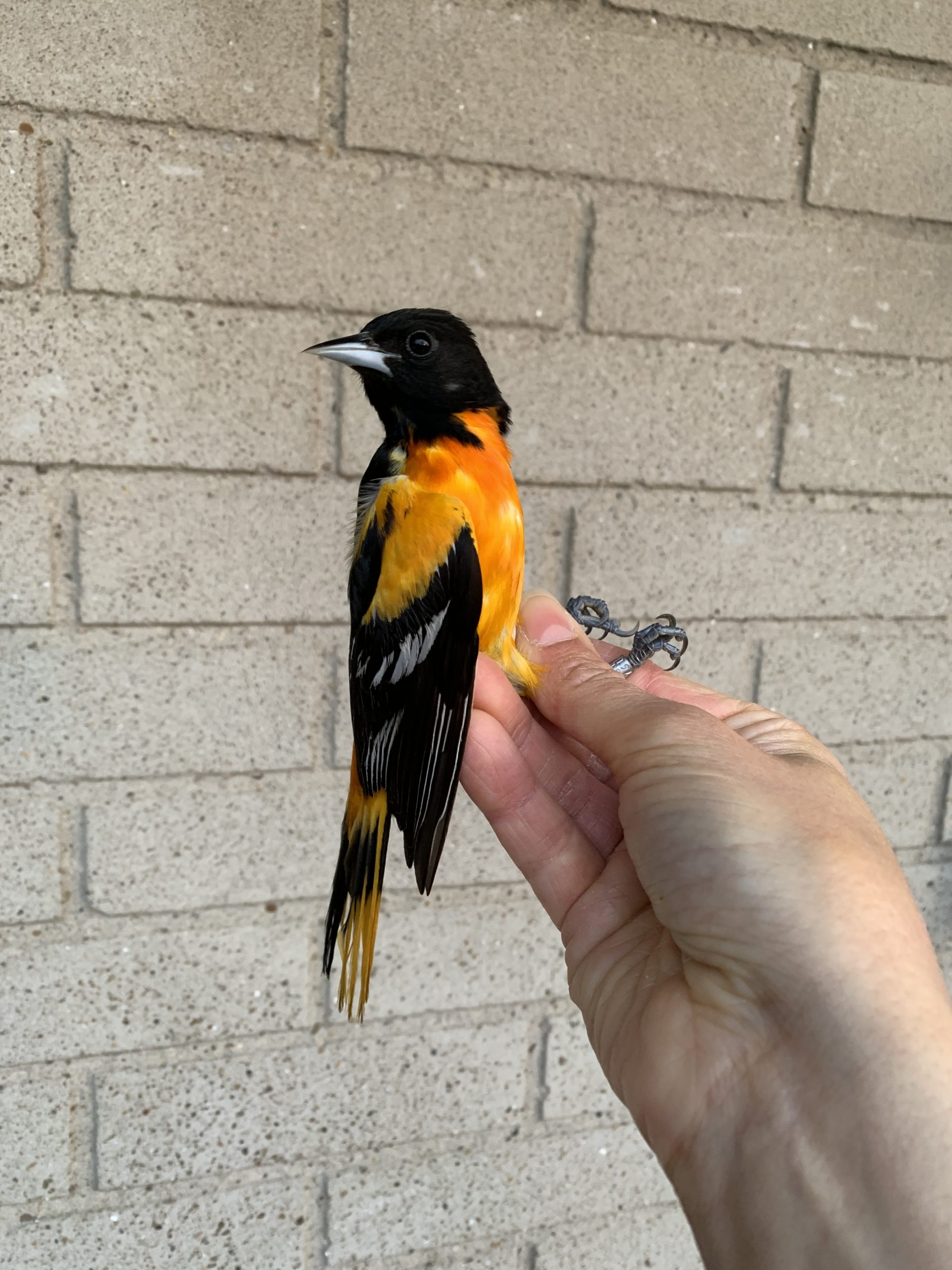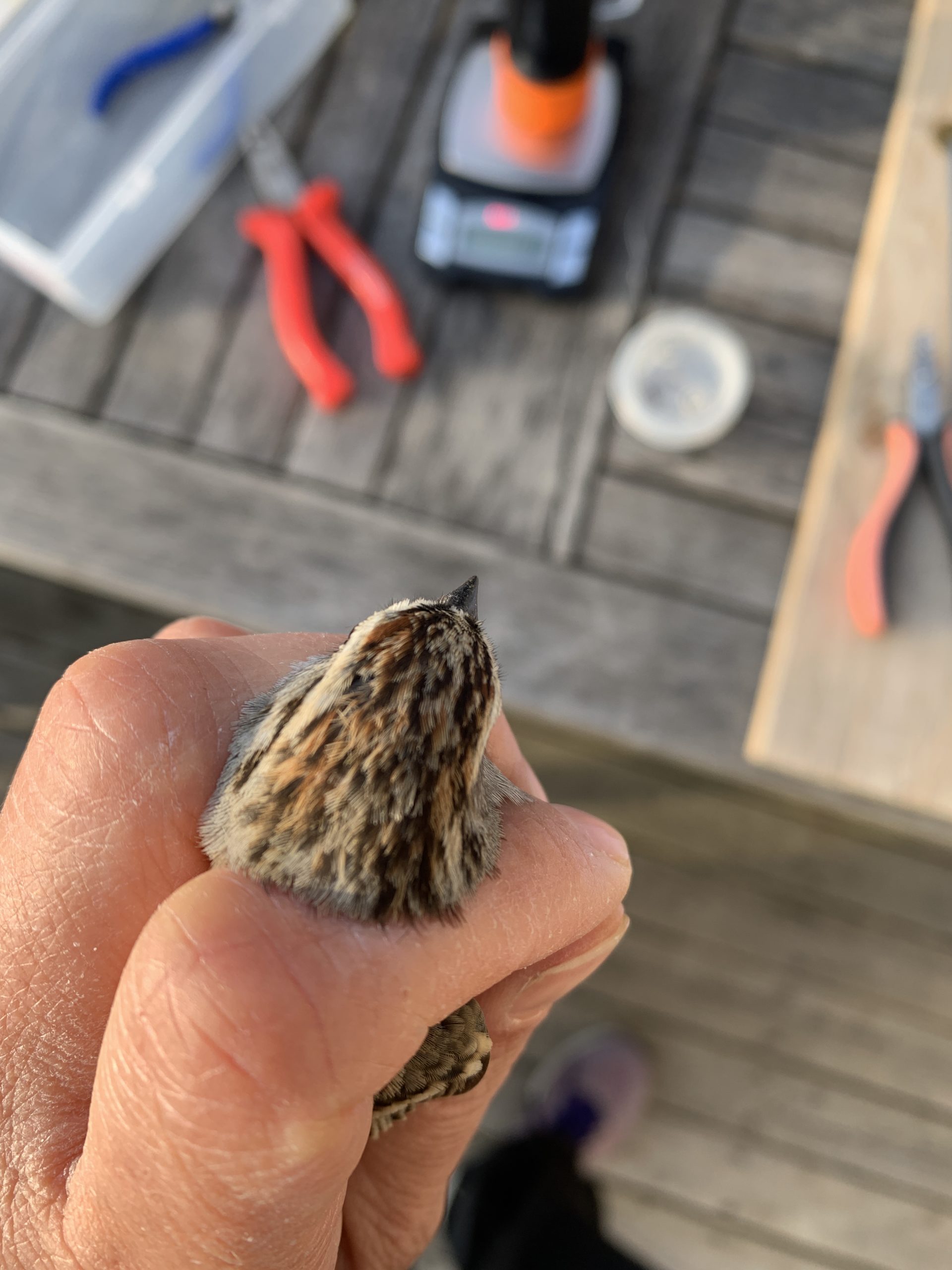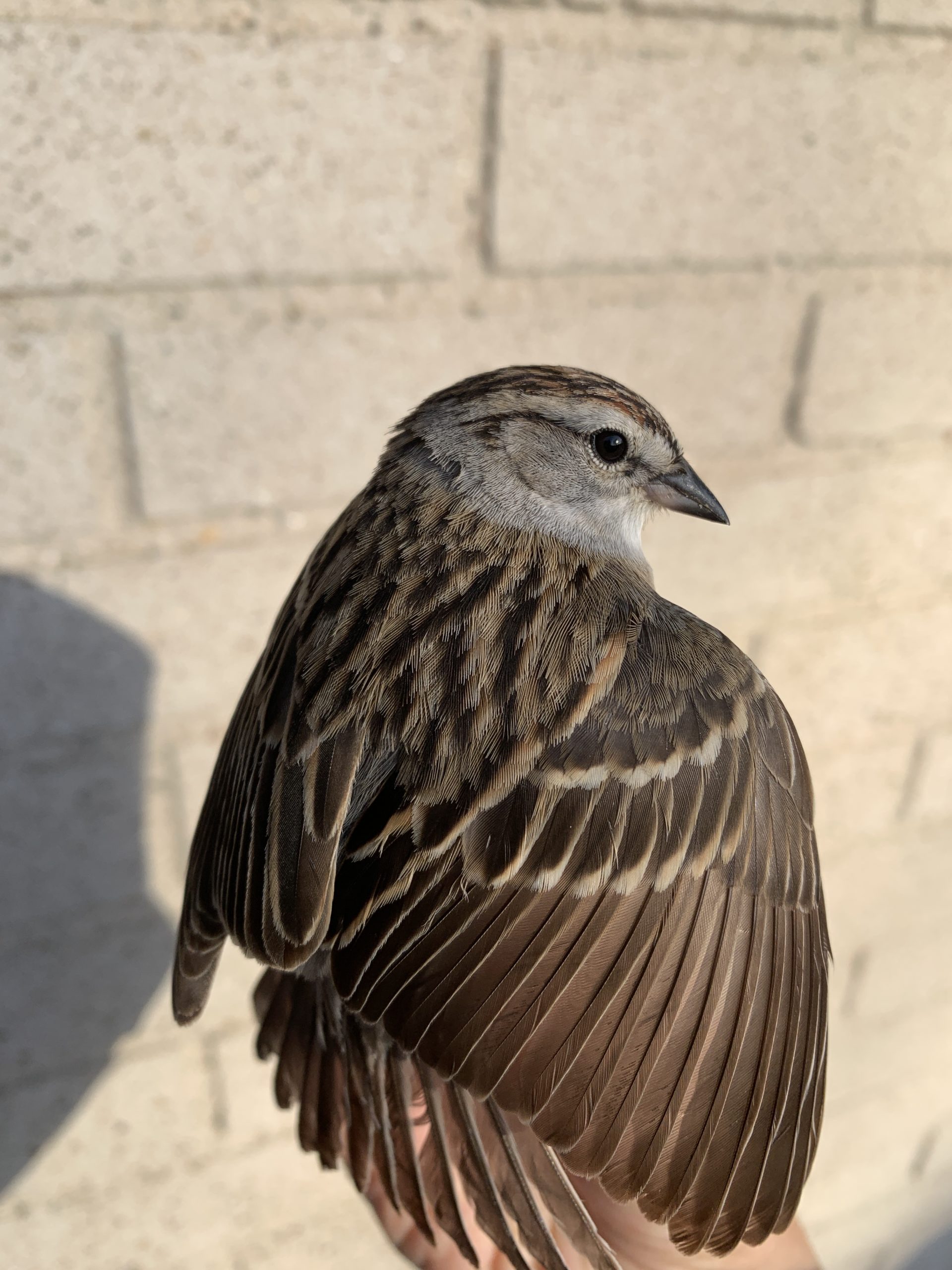I heard somewhere that the last part of August is like the Sunday of summer…. As a teacher, I’m mentally flexing my brain to start thinking about heading back, as a gardener I’m madly trying to harvest and can all my veggies and as a birder I’m watching and listening for the signs that birds have already decided summer is over. A few are still hanging on. Within the last week the House Wrens by our kitchen window have fledged and I have been seeing the fledged young of Blue Jays and Cardinals (and the odd Brown-headed Cowbird) still following parents around begging for food.
Several birds have started moving for sure, one of which I think I’m seeing: Baltimore Orioles. There are many nesting in our area and they are frequent visitors to the grape jelly feeder by my feeder net. Since the spring, I have banded over 30 BAORs, all from the one net in my backyard. This may be the most frequently caught bird for my site after American Goldfinches! I know we have a lot of local BAORs but many visiting the feeder lately have not been banded; 15 of the BAOR’s I’ve banded have been since the beginning of August, 12 of them in the last 3 days, and only 2 recaptures.
As a side note, after talking with Nancy Furber, I have switched to using marmalade. Marmalade is much more economical, can be bought in larger quantities and is so much easier to find! Last year I once went to 7 stores trying to find grape jelly. Nancy found her birds happily ate it and mine don’t seem to have a preference either. Rick and Marg also mentioned they were watering down the jelly to make it go farther with the side benefit that it is an extra source for water in the hot summers. I also did this with the jelly and have continued doing it with the marmalade.
With fall migration also comes the possibility of adding new birds for this site. Four new birds so far this fall have been: American Redstart, Nashville Warbler, Hairy Woodpecker and Cedar Waxwings. The wild grape crop looks great around my area with one of my nets in front of a particularly good hedgerow full of them, so I’m hoping to get quite a few of this fall. Nancy also came by to see if we could band some of my hummingbirds and we had success! I’ll count it as a 5th new species, even though it doesn’t get entered in my data.
Birds Banded Aug 22 – 24th
American Redstart – 1
Traill’s Flycatcher – 1
Nashville Warbler – 1
American Goldfinch – 2
Black-capped Chickadee – 1
Yellow Warbler – 1
Common Yellowthroat – 1
House Finch – 3
Song Sparrow – 3
Cedar Waxwing – 2
Downy Woodpecker – 2
Baltimore Oriole – 12
Common Grackle – 1
Northern Cardinal – 2
Birds Banded – 33
Recaps
Black-capped Chickadee – 5
Baltimore Oriole – 2
Downy Woodpecker – 4
Total Banded 44 (33 new, 11 recaps)

